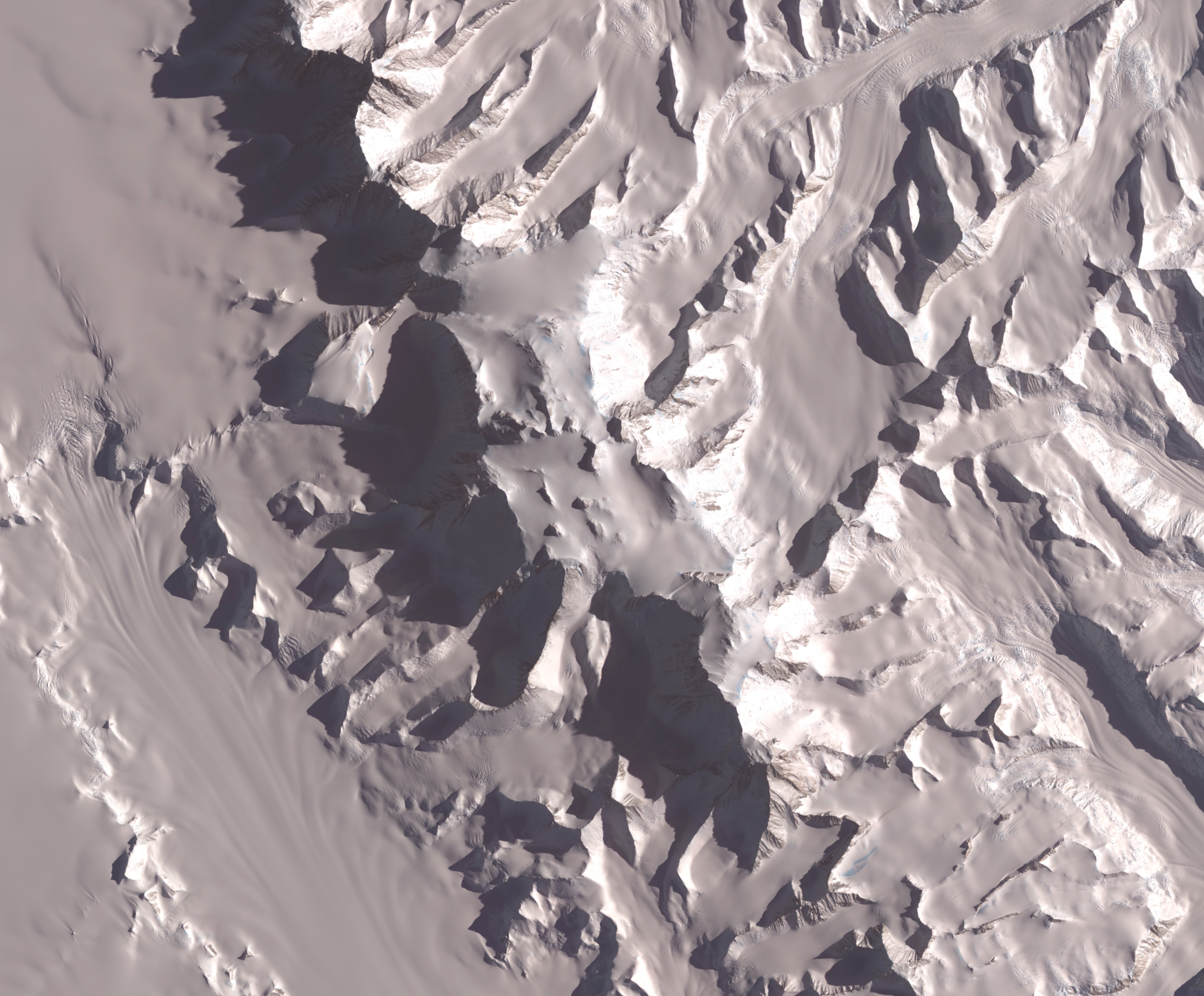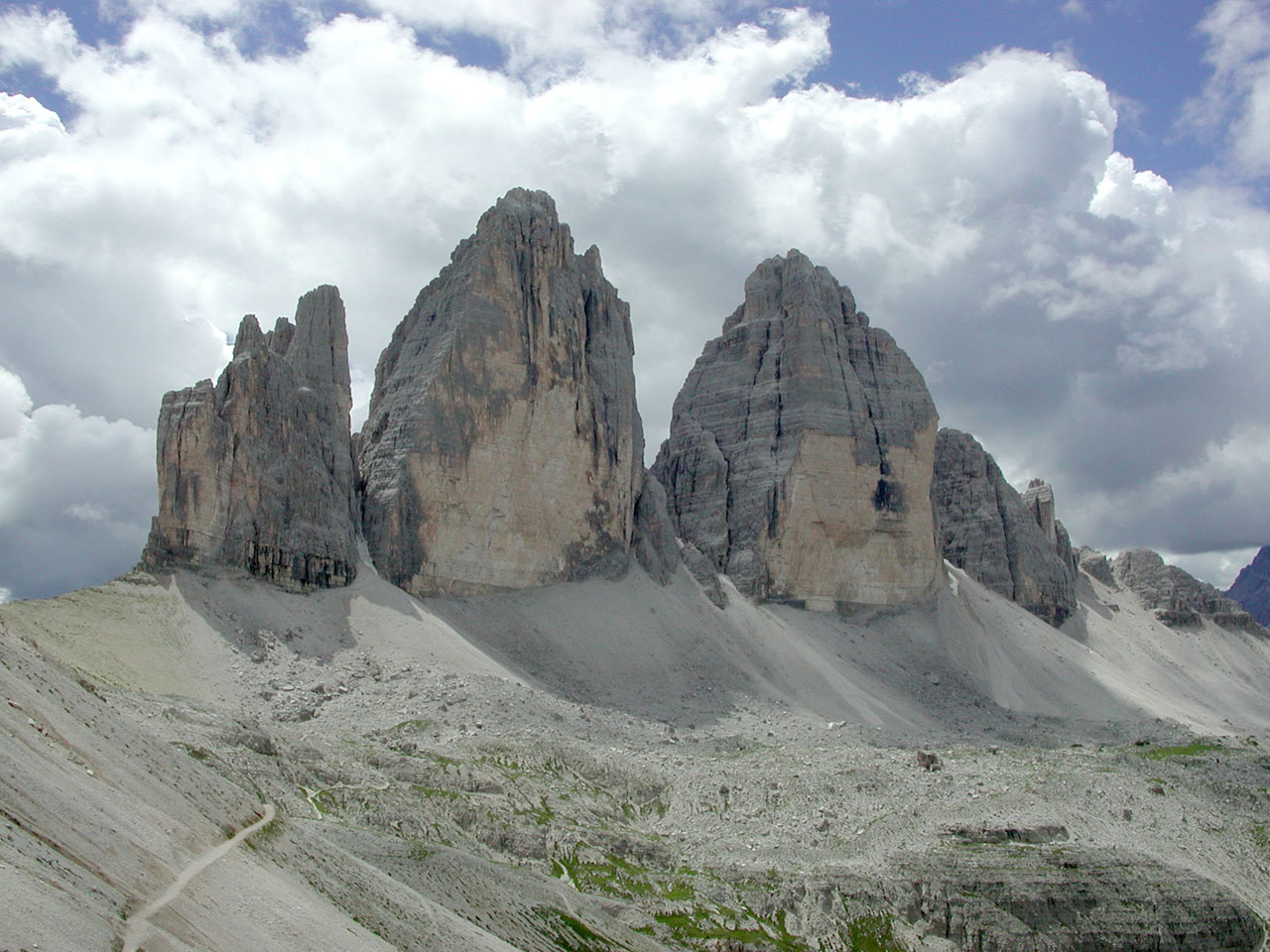Bigger mapThe Seven Summits are the highest mountains of each of the seven continents. Summiting all of them is regarded as a mountaineering challenge, first postulated as such in the 1980s by Richard Bass.
In fact there are two different The Seven Summits lists. The first Seven Summits list was proposed by Bass chose the highest mountain of mainland Australia, Mount Kosciuszko (2 228 m), to represent the Australian continent's highest summit. Reinhold Messner suggested another list replacing Mount Kosciuszko with New Guinea's Carstensz Pyramid (4 884 m). Neither the Bass nor the Messner list includes Mont Blanc. From a mountaineering point of view the Messner list is the more challenging one. Climbing Carstensz Pyramid has the character of an expedition, whereas the ascent of Kosciuszko is an easy hike.
Another disputed issue is Europe's highest mountain. Mount Elbrus (5 642 m) in the Caucasus is included on the both Bass and Mesner list, but there are people considering Mont Blanc (4 808 m) to be Europe's highest mountain.
The Seven Summits list by Mesner - Carstensz list
Africa
Africa's highest mountain
Kilimanjaro is located in Tanzania. The highest point on Kilimanjaro is Uhuru Peak, on the volcano Kibo 5 895 metres.
Map of the areaAntarctica Vinson Massif
Vinson Massif (4 897 meters) is the highest mountain of Antarctica, situated in the Ellsworth Mountains, located about 1 200 km from the South Pole. The mountain is about 21 km long and 13 km wide.
Map of the areaAustralia and Oceania Puncak Jaya
Puncak Jaya (4 884 meters), sometimes called Mount Carstensz or the Carstensz Pyramid, is a mountain in the Sudirman Range, the western central highlands of Papua province, Indonesia. It's the highest summit for Australia and Oceania.
Map of the areaAsia Mount Everest
Mount Everest, also called Chomolungma, Qomolangma or Zhumulangma is the highest mountain on Earth, as measured by the height of its summit above sea level, which is 8 848 metres. The mountain, which is part of the Himalaya range in High Asia, is located on the border between Sagarmatha Zone, Nepal, and Tibet, China.
Map of the areaEurope Mount Elbrus
Mount Elbrus (west summit) stands at 5 642 meters and is considered to be the highest mountain in Europe; it is also the highest point of Russia. The east summit is slightly lower: 5 621 meters. The mountain is located in the western Caucasus mountain, Russia, near the border of Georgia.
Map of the areaNorth America Mount McKinley
Mount McKinley or Denali "The Great One" in Alaska is the highest mountain peak in North America, at a height of 6 194 meters. Denali was renamed Mount McKinley for William McKinley, a nominee for president, by the Princeton graduate and gold prospector, William Dickey. Mount McKinley has a larger bulk and rise than Mount Everest. Even though the summit of Everest is about 2 700 meters higher as measured from sea level, its base sits on the Tibetan Plateau at about 5 200 meters, giving it a real vertical rise of a little more than 3 700 meters.
Map of the areaSouth America Cerro Aconcagua
Cerro Aconcagua (6 962 m) is the highest mountain in the Americas, and the highest mountain outside Asia. It is located in the Andes mountain range, in the Argentine province of Mendoza. Aconcagua is the highest peak in both the Western and Southern Hemispheres.
Map of the area
 The Dolomites are a challenging and beautiful range of steep limestone peaks situated south of the Austrian/Italian border. The area is stretching out 80 kilometers east of Bolzano, which is split into different groups linked by a good road network. Many of the peaks are over 3000 meters high, giving long and demanding big wall routes up to 800 meters long. Some routes can be over 20-pitches long, however most them can be done in a single days outing or with an overnight stay in a mountain hut or lodge.
The Dolomites are a challenging and beautiful range of steep limestone peaks situated south of the Austrian/Italian border. The area is stretching out 80 kilometers east of Bolzano, which is split into different groups linked by a good road network. Many of the peaks are over 3000 meters high, giving long and demanding big wall routes up to 800 meters long. Some routes can be over 20-pitches long, however most them can be done in a single days outing or with an overnight stay in a mountain hut or lodge. The north face of Cima Grande is one of the great alpine north faces and is breathtakingly steep - a real big wall. At 450 meters and 16-pitches long, and graded at UIAA V11- (UK E2 5c or French 6b) it is very sustained for long periods and therefore demands the prestige attached to it. However as with many of the routes in the Dolomites it is possible to aid across the difficult sections, which reduces this route to V1/A1 (UK E1 5B or French 6a).
The north face of Cima Grande is one of the great alpine north faces and is breathtakingly steep - a real big wall. At 450 meters and 16-pitches long, and graded at UIAA V11- (UK E2 5c or French 6b) it is very sustained for long periods and therefore demands the prestige attached to it. However as with many of the routes in the Dolomites it is possible to aid across the difficult sections, which reduces this route to V1/A1 (UK E1 5B or French 6a).










